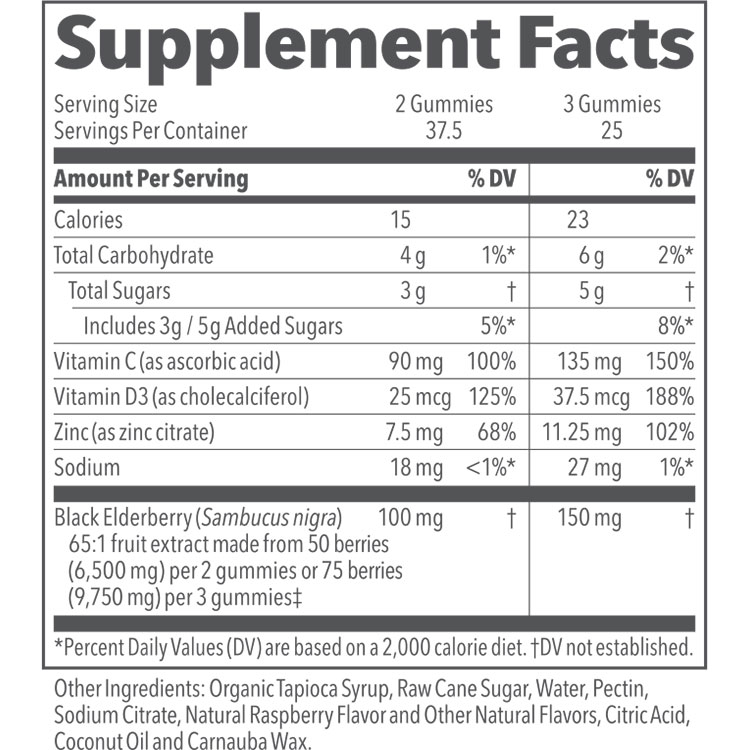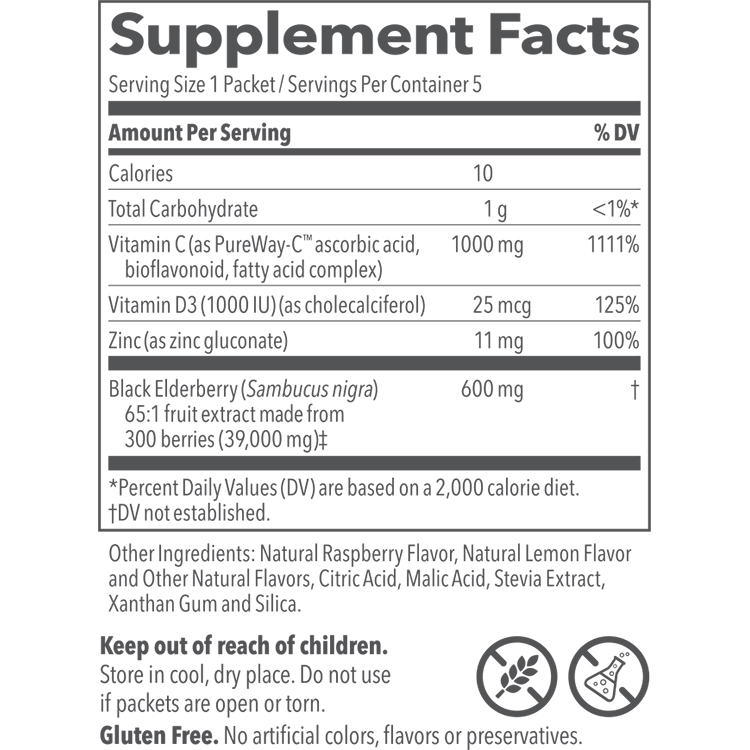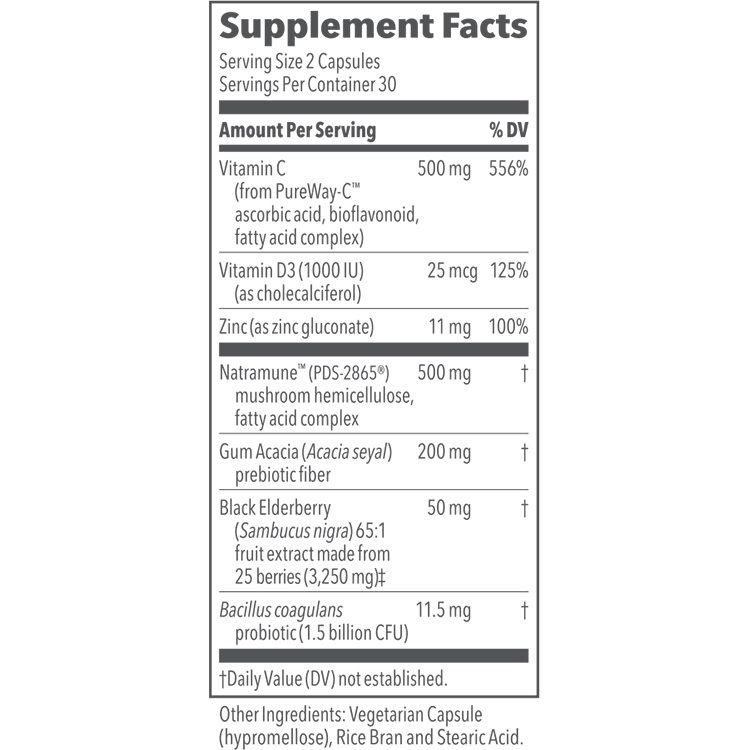HOW DOES THE URINARY SYSTEM WORK?
The urinary system is a very important system in the body as it removes waste and excess water from the body. The urinary tract is comprised of the kidneys, ureters, urethra, and bladder. It is essential that these organs work together for a healthy functioning urinary tract (1). The kidneys are two bean-shaped organs that are located below the rib cage, one on each side of the spine. The kidneys act as filters for the blood, removing waste from the bloodstream to create urine. Healthy kidneys are also important for healthy bodily function because they perform essential functions like the stability of electrolytes, producing hormones for the regulation of blood pressure, production of red blood cells and bone strength (1). The ureters are thin, muscular tubes that drain the urine from the kidneys to the bladder. The bladder acts as a storage tank for urine and is eventually emptied through the urethra (2).
WHAT ARE URINARY TRACT INFECTIONS?
Infection of any part of the urinary system is known as urinary tract infection or UTI. This is caused by bacteria entering the urinary tract, resulting in pain, swelling, and inflammation of the urinary tract. The bacteria can travel to the ureters and the kidneys causing more serious infections. Most UTIs are caused by a bacteria known as E.coli, which lives in the intestines, but can less commonly be caused by a bacteria known as Proteus mirabilis (3,4). Urinary tract infections are divided into upper UTIs and lower UTIs, depending on which part of the urinary system is affected.
Lower Urinary Tract Infection
Lower urinary tract infections are infections of the urethra and the bladder (5). Urethritis is the inflammation of the urethra, typically caused by sexually transmitted agents such as Gonococcus, Chlamydia trachomatis, and Mycoplasma genitalium (6,7,8). On the other hand, cystitis is an infection and inflammation of the bladder. However, cystitis is not only caused by UTIs. Less common causes of cystitis include bladder stones, bladder cancer, and carcinoma in situ (9).
Upper Urinary Tract Infection
Upper urinary tract infections are infections of the ureters and the kidneys and are usually more serious than lower UTIs (10). Ureteritis is the inflammation of the ureters usually caused by bacteria. Ureteritis is usually an extension of cystitis or pyelonephritis and presents with similar symptoms of painful and frequent urination, flank pain and fever (11). Pyelonephritis is the infection of the kidney by bacteria found in the intestines (5). Pyelonephritis requires medical attention as it may be life-threatening if the bacteria spread to the blood.
RISK FACTORS FOR URINARY TRACT INFECTIONS
- Spermicide use (12,13,14,15)
- New sex partner within the past year (13,16)
- Previous UTI (16,17)
- Female anatomy, specifically a shorter urethra can make it easier for bacteria to move from the urethra to the bladder (18)
- Genetic history of UTI (19,20)
- Post-menopause (21,22)
- Increased age (23,24)
- Pregnancy (25,26,27)
- Diabetes (28,29)
- Kidney transplant (30,31,32)
- Nephrolithiasis (Kidney Stones) (33)
- Immunocompromised status (34)
- Prolonged use of urinary catheter (35,36)
- Functional or anatomic abnormality in the urinary tract (35)
- Obstructive uropathy (when urine cannot drain through a ureter and it is back up into the kidney, causing the kidney to swell) (12)
SYMPTOMS OF URINARY TRACT INFECTIONS
Lower Urinary Tract Infections
- Painful and frequent urination
- Urethral itching
- Discharge (37)
- Lower abdominal pain
- Blood in urine
- Mild fever (5,9)
- Rectal or pelvic pain
Upper Urinary Tract Infections
- Flank (upper back and side) pain
- Fever
- Nausea
- Vomiting (38)
URINARY TRACT INFECTIONS FACTS AND STATISTICS
Urinary tract infections are the third most common infection, following respiratory and gastrointestinal infections (12). In 2007 estimates showed that there were 150 million cases of urinary tract infections worldwide (38,39). UTIs account for more than 12% of infections reported by acute care hospitals (40). In 2011, the Health-Care Associated Infection estimates there were 93,000 UTIs occurring in acute care hospitals in the United States (41).
Urinary tract infections affect both sexes and all age groups but are generally more common in women than in men. Almost half of all women will experience a urinary tract infection at least once in their life (42). In the United States, up to 70% of urinary tract infections acquired in hospitals (acute and long-term stays) are due to catheterization (36).
MEDICAL TREATMENT OF URINARY TRACT INFECTIONS
Typically, antibiotics, such as Cephalexin or Fosfomycin, are the first line of treatment for urinary tract infections (5). Antibiotics are prescribed based on how long one has had the infection and what type of bacteria is present. For more severe UTIs, intravenous antibiotics given in the hospital may be needed.
NATURAL WAYS OF SUPPORTING A HEALTHY URINARY TRACT
Practices to Support a Healthy Urinary Tract:
- Clean the genital areas before and after sexual intercourse
- Proper genital hygiene
- Avoid multiple sexual partners
- Avoid spermicidal contraceptives, diaphragms and vaginal douching
- Avoid bubble bath liquids, bath oils, vaginal creams and lotions, deodorant sprays or soaps
- After a bowel movement, it is encouraged to wipe front to back
Natural Supplements That Support a Healthy Urinary Tract:
- Cranberries (43,44)
- D-Mannose (45,46)
- Uva Ursi (47,48)
- Grapefruit Seed Extract (49,50)
- Caprylic Acid (51)
REFERENCES
- The Urinary Tract & How It Works | NIDDK. National Institute of Diabetes and Digestive and Kidney Diseases. 2018. https://www.niddk.nih.gov/health-information/urologic-diseases/urinary-tract-how-it-works. Accessed March 10, 2018.
- Hickling DR, Sun T-T, Wu X-R. Anatomy and Physiology of the Urinary Tract: Relation to Host Defense and Microbial Infection. Microbiol Spectr. 2015;3(4): 10.1128/microbiolspec.UTI-0016-2012. doi:10.1128/microbiolspec.UTI-0016-2012
- Urinary Tract Infections. New York: National Kidney Foundation; 2010:1-6. https://www.kidney.org/sites/default/files/uti.pdf. Accessed March 10, 2018.
- Schaffer JN, Pearson MM. Proteus mirabilis and Urinary Tract Infections. Microbiol Spectr. 2015;3(5):212-263. doi:10.1128/microbiolspec.UTI-0017-2013
- Barber AE, Norton JP, Wiles TJ, Mulvey MA. Strengths and Limitations of Model Systems for the Study of Urinary Tract Infections and Related Pathologies. Microbiol Mol Biol Rev. 2016;80(2):351-367. doi:10.1128/MMBR.00067-15
- Moi H, Blee K, Horner PJ. Management of non-gonococcal urethritis. BMC Infect Dis. 2015;15(1). doi:10.1186/s12879-015-1043-4
- Unemo M, Shafer WM. Antimicrobial resistance in Neisseria gonorrhoeae in the 21st Century: Past, evolution, and future. Clin Microbiol Rev. 2014;27(3):587-613. doi:10.1128/CMR.00010-14
- Andersen B, Sokolowski I, Østergaard L, Kjølseth Møller J, Olesen F, Jensen JS. Mycoplasma genitalium: prevalence and behavioural risk factors in the general population. Sex Transm Infect. 2007;83(3):237-241. doi:10.1136/sti.2006.022970
- Lee G, Romih R, Zupancic D. Cystitis: From Urothelial Cell Biology to Clinical Applications. Biomed Res Int. 2014;2014:1-10. doi:10.1155/2014/473536
- Hannan TJ, Totsika M, Mansfield KJ, Moore KH, Schembri MA, Hultgren SJ. Host-pathogen checkpoints and population bottlenecks in persistent and intracellular uropathogenic Escherichia coli bladder infection. FEMS Microbiol Rev. 2012;36(3):616-648. doi:10.1111/j.1574-6976.2012.00339.x
- Giambroni L, Monticelli L, Simeone C, Frego E. Ureteritis. Arch Ital Urol Nefrol Androl. 1993;65(1):31-3.
- Najar MS, Saldanha CL, Banday K A. Approach to urinary tract infections. Indian J Nephrol. 2009;19(4):129-139. doi:10.4103/0971-4065.59333
- Scholes D, Hooton TM, Roberts PL, Gupta K, Stapleton AE, Stamm WE. Risk factors associated with acute pyelonephritis in healthy women. Ann Intern Med. 2005;142(1). doi:10.7326/0003-4819-142-1-200501040-00008
- Fihn SD, Boyko EJ, Normand EH, et al. Association between use of spermicide-coated condoms and Escherichia coli urinary tract infection in young women. Am J Epidemiol. 1996;144(5):512-520.
- Fihn SD, Boyko EJ, Chen CL, Normand EH, Yarbro P, Scholes D. Use of spermicide-coated condoms and other risk factors for urinary tract infection caused by Staphylococcus saprophyticus. Arch Intern Med. 1998;158(3):281-287. doi:10.1001/archinte.158.3.281
- Li R, Leslie SW. Cystitis. [Updated 2018 Jan 26]. In: StatPearls [Internet]. Treasure Island (FL): StatPearls Publishing; 2018 Jan-. https://www.ncbi.nlm.nih.gov/books/NBK482435/
- Hooton TM, Scholes D, Hughes JP, et al. A prospective study of risk factors for symptomatic urinary tract infection in young women. N Engl J Med. 1996;335(7):468-474. doi:10.1056/NEJM199608153350703
- Barber AE, Norton JP, Spivak AM, Mulvey MA. Urinary tract infections: current and emerging management strategies. Clin Infect Dis. 2013;57:719-724. doi:10.1093/cid/cit284
- Ragnarsdóttir B, Lutay N, Grönberg-Hernandez J, Köves B, Svanborg C. Genetics of innate immunity and UTI susceptibility. Nat Rev Urol. 2011;8(8):449-468. doi:10.1038/nrurol.2011.100
- Ambite I, Rydstrom G, Schwaderer A, Hains D. The Genetics of Urinary Tract Infections and the Innate Defense of the Kidney and Urinary tract. J Pediatr Genet. 2015;5(1):025-032. doi:10.1055/s-0035-1557110
- Jackson SL, Boyko EJ, Scholes D, Abraham L, Gupta K, Fihn SD. Predictors of urinary tract infection after menopause: A prospective study. Am J Med. 2004;117(12):903-911. doi:10.1016/j.amjmed.2004.07.045
- Moore EE, Hawes SE, Scholes D, Boyko EJ, Hughes JP, Fihn SD. Sexual intercourse and risk of symptomatic urinary tract infection in post-menopausal women. J Gen Intern Med. 2008;23(5):595-599. doi:10.1007/s11606-008-0535-y
- Cortes-Penfield N, Trautner B, Jump R. Urinary Tract Infection and Asymptomatic Bacteriuria in Older Adults. Infect Dis Clin North Am. 2017;31(4):673-688. doi:10.1016/j.idc.2017.07.002.
- Rowe TA, Juthani-Mehta M. Urinary tract infection in older adults. Aging health. 2013;9(5):519-528. doi:10.2217/ahe.13.38
- Matuszkiewicz-Rowińska J, Małyszko J, Wieliczko M. Urinary tract infections in pregnancy: old and new unresolved diagnostic and therapeutic problems. Arch Med Sci. 2015;11(1):67-77. doi:10.5114/aoms.2013.39202
- Schnarr J, Smaill F. Asymptomatic bacteriuria and symptomatic urinary tract infections in pregnancy. Eur J Clin Invest. 2008;38(SUPPL.2):50-57. doi:10.1111/j.1365-2362.2008.02009.x
- Jeyabalan A, Lain KY. Anatomic and Functional Changes of the Upper Urinary Tract During Pregnancy. Urol Clin North Am. 2007;34(1):1-6. doi:10.1016/j.ucl.2006.10.008
- Boyko EJ, Fihn SD, Scholes D, Chen C-L, Normand EH, Yarbro P. Diabetes and the risk of acute urinary tract infection among postmenopausal women. Diabetes Care. 2002;25(10):1778-1783. doi:10.2337/diacare.25.10.1778
- Lenherr SM, Clemens JQ, Braffett BH, et al. Glycemic Control and Urinary Tract Infections in Women with Type 1 Diabetes: Results from the DCCT/EDIC. J Urol. 2016;196(4):1129-1135. doi:10.1016/j.juro.2016.04.071
- Hollyer I, Ison MG. The Challenge of Urinary Tract Infections in Renal Transplant Recipients. Transpl Infect Dis. 2017:e12828. doi:10.1111/tid.12828
- Rivera-Sanchez R, Delgado-Ochoa D, Flores-Paz RR, et al. Prospective study of urinary tract infection surveillance after kidney transplantation. BMC Infect Dis. 2010;10. doi:10.1186/1471-2334-10-245
- Senger SS, Arslan H, Azap Ö K, Timurkaynak F, Çaǧir Ü, Haberal M. Urinary Tract Infections in Renal Transplant Recipients. Transplant Proc. 2007;39(4):1016-1017. doi:10.1016/j.transproceed.2007.02.060
- Worcester EM, Coe FL. Nephrolithiasis. Prim Care. 2008;35(2):369-91, vii. doi:10.1016/j.pop.2008.01.005
- Tandogdu Z, Cai T, Koves B, Wagenlehner F, Bjerklund-Johansen TE. Urinary Tract Infections in Immunocompromised Patients with Diabetes, Chronic Kidney Disease, and Kidney Transplant. Eur Urol Focus. 2016;2(4):394-399.
- Catheter-associated Urinary Tract Infections (CAUTI) | HAI | CDC. Cdcgov. 2018. https://www.cdc.gov/hai/ca_uti/uti.html. Accessed March 10, 2018.
- Nicolle LE. Catheter associated urinary tract infections. Antimicrob Resist Infect Control. 2014;3(1). doi:10.1186/2047-2994-3-23
- Shahmanesh M, Moi H, Lassau F, Janier M. 2009 European guideline on the management of male non-gonococcal urethritis. Int J STD AIDS. 2009;20(7):458-464. doi:10.1258/ijsa.2009.009143
- Flores-Mireles AL, Walker JN, Caparon M, Hultgren SJ. Urinary tract infections: Epidemiology, mechanisms of infection and treatment options. Nat Rev Microbiol. 2015;13(5):269-284. doi:10.1038/nrmicro3432
- Schappert SM, Rechtsteiner EA. Ambulatory medical care utilization estimates for 2007. Vital Health Stat 13. 2011;(169):1-38. doi:10.1037/e587152010-001
- Urinary Tract Infection (Catheter-Associated Urinary Tract Infection [CAUTI] and Non-Catheter-Associated Urinary Tract Infection [UTI]) and Other Urinary System Infection [USI]) Events. Cdcgov. 2018. https://www.cdc.gov/nhsn/pdfs/pscmanual/7psccauticurrent.pdf. Accessed March 13, 2018.
- HAI Data and Statistics | HAI | CDC. Cdcgov. 2018. https://www.cdc.gov/hai/surveillance/index.html. Accessed March 13, 2018.
- Foxman B. Epidemiology of urinary tract infections: Incidence, morbidity, and economic costs. Disease-a-Month. 2003;49(2):53-70. doi:10.1016/S0011-5029(03)90000-9
- Kontiokari T, Sundqvist K, Nuutinen M, Pokka T, Koskela M, Uhari M. Randomised trial of cranberry-lingonberry juice and Lactobacillus GG drink for the prevention of urinary tract infections in women. Br Med J. 2001;322(7302):1571. doi:10.1136/bmj.322.7302.1571
- Stothers L. A randomized trial to evaluate effectiveness and cost effectiveness of naturopathic cranberry products as prophylaxis against urinary tract infection in women. Can J Urol. 2002;9(3):1558-1562.
- Kranjčec B, Papeš D, Altarac S. D-mannose powder for prophylaxis of recurrent urinary tract infections in women: a randomized clinical trial. World J Urol. 2013;32(1):79-84. doi:10.1007/s00345-013-1091-6.
- Altarac S, Papeš D. Use of d-mannose in prophylaxis of recurrent urinary tract infections (UTIs) in women. BJU Int. 2013;113(1):9-10. doi:10.1111/bju.12492.
- Trill J, Simpson C, Webley F, et al. Uva-ursi extract and ibuprofen as alternative treatments of adult female urinary tract infection (ATAFUTI): Study protocol for a randomised controlled trial. Trials. 2017;18(1). doi:10.1186/s13063-017-2145-7
- Larsson B, Jonasson A, Fianu S. Prophylactic effect of UVA-E in women with recurrent cystitis: A preliminary report. Curr Ther Res. 1993;53(4):441-443. doi:10.1016/S0011-393X(05)80204-8
- Oyelami OA, Agbakwuru EA, Adeyemi LA, Adedeji GB. The effectiveness of grapefruit (Citrus paradisi) seeds in treating urinary tract infections. J Altern Complement Med. 2005;11(2):369-371. doi:10.1089/acm.2005.11.369
- Osungunna MO, Onawunmi GO. Anti-adhesion and antibiotic modulatory evaluation of grapefruit (Citrus paradisi) juice and seed extract on bacteria isolated from urine and catheter. J Pharm Pharmacogn Res. 2016;4(1):25-38.
- Omura Y, Young B, Jones M, Pallos A, Duvvi H, Shimotsuura Y. Caprylic acid in the effective treatment of intractable medical problems of frequent urination, incontinence, chronic upper respiratory infection, root canalled tooth infection, ALS, etc., caused by Asbestos & mixed infections of Candida albicans, Helicobacter pylori & Cytomegalovirus with or without other microorganisms & mercury. Acupunct Electro-Therapeutics Res. 2011;36(1-2):19-64.




